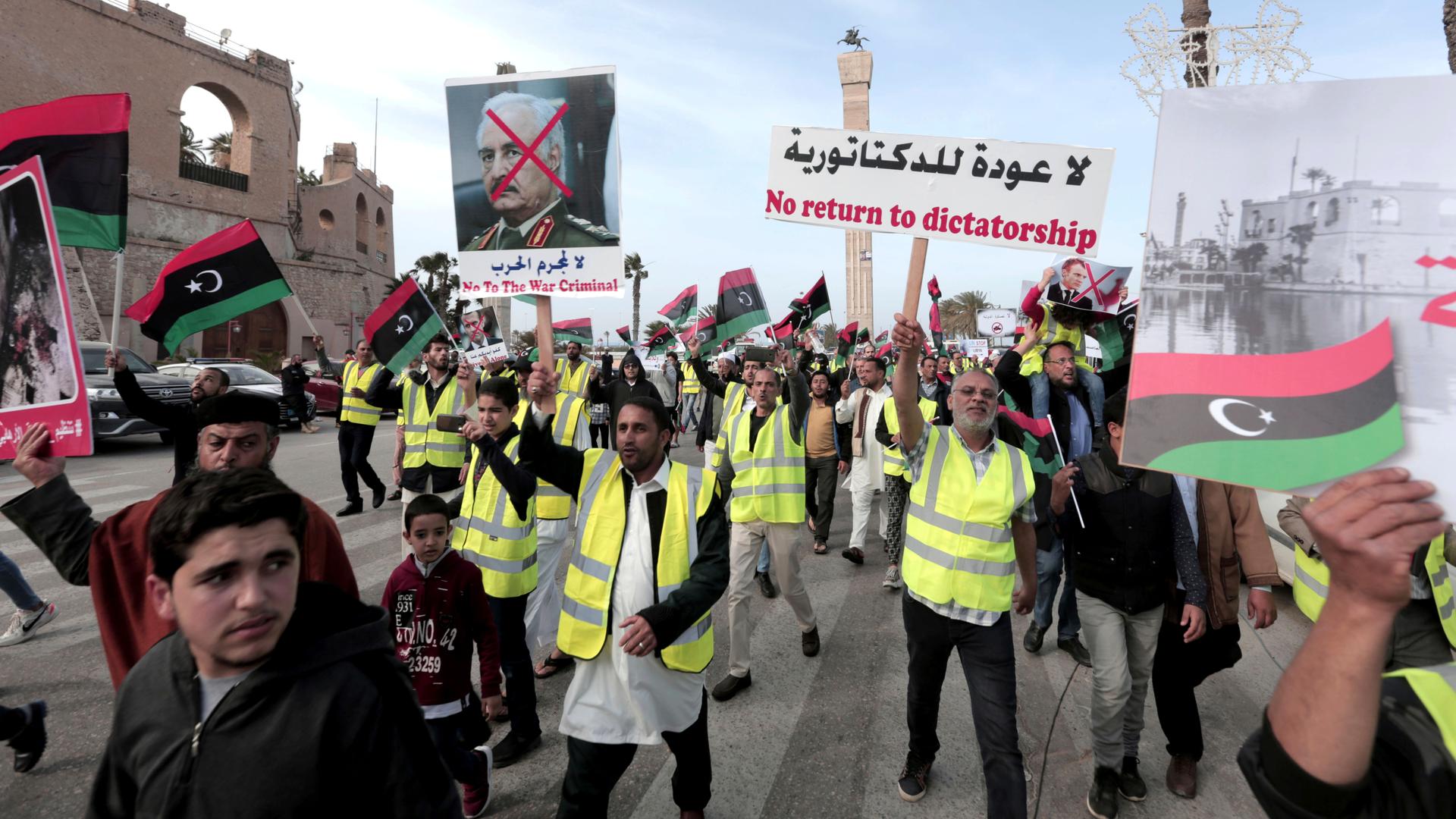The entry of African mercenaries risks further destabilising the situation in Libya and presents risks for the countries these fighters will return back to.
There is a history of mercenaries from sub-Saharan African countries coming to Libya for work. It is no secret that Sudanese and Chadian fighters have been involved in Libya’s crisis, fighting for a range of actors such as the self-styled Libyan National Army (LNA), the country’s UN-recognised government, as well as extremist groups like Daesh.
The role of Sudanese and Chadian mercenaries in the Libyan conflict has deepened since General Khalifa Haftar launched his ongoing campaign to take control of Tripoli in April 2019. According to UN sources, Sudan’s Lieutenant General Mohamed Hamdan Dagalo (a.k.a. Hemeti) provided Haftar with military support and deployed 1,000 Sudanese Rapid Support Forces to eastern Libya in mid-2019.
Earlier this month, the Guardian reported on a new flow of Sudanese and Chadian mercenaries to Libya as the North African conflict further regionalizes. According to the leaders two factions comprised of Sudanese fighters operating in Libya, there have been hundreds of new recruits entering these two groups’ ranks as Libya’s civil war rages on – placing the number of Sudanese mercenaries involved in the Libyan crisis above 3,000. Both factions are allied with Haftar’s LNA, which is fighting to topple the UN-recognised Government of National Accord (GNA) in Tripoli.
Who are these Sudanese fighters in Libya?
According to Jason Burke and Zeinab Mohammed Salih, many of the dominant Sudanese factions fighting in Libya previously waged war in Darfur and also participated in the uprising against former Sudanese strongman Omar al-Bashir. These authors also reported on “claims that a large contingent of Sudanese fighters from the feared paramilitary Rapid Support Forces were deployed to Libya on [Haftar’s] request…”
Thus far, it appears that these Sudanese fighters in Libya have made somewhat of a difference in the North African country’s civil war. A UN panel of experts produced reports which maintained that mercenaries from Sudan helped Haftar’s forces secure Libya’s “oil crescent”, which was extremely important to the LNA’s set of objectives on the ground after the launch of “Operation to Liberate Tripoli”.
Mercenaries from these African countries are travelling to Libya for reasons similar to why Sudanese fighters crossed the Red Sea to fight in Yemen. It is mainly about money. A lack of opportunities and resources at home have prompted these thousands of fighters to secure an income through the Libyan civil war. At the same time, tribal links and geopolitical factors are also part of the picture. Sudanese, Chadian, and Nigerien factions involved in the Libyan crisis have fought there based on hopes that their respective groups could garner support down the road for their sides in conflicts back in their home countries.
It seems safe to bet that the ramifications of Sudanese and Chadian fighters joining forces with other actors in Libya’s conflict will prove destabilising for both Libya and these mercenaries’ home countries too. Years ago, officials in Khartoum raised alarm over the Minnawi faction of the Sudan Liberation Movement’s participation in Libya’s conflict because of concerns about what this group could potentially do after returning to Darfur. In mid-2017 the Geneva-based Small Arms Survey addressed the role of that mercenaries from sub-Saharan African have been playing in Libya’s civil war, warning that the “Chad–Sudan–Libya triangle has once again become the center of a regional system of conflicts. A notable consequence of these conflicts has been the re-emergence since 2011 of a regional market for cross-border combatants.”
Difficulties in the Sahel
Many lawless havens exist throughout Africa’s Sahel. Borders are porous and many live on the brink of famine in this waterless region. Armed groups, kidnappers, and smugglers take advantage of desperate conditions in this impoverished part of the world where centralised governments often exercise no control over large swathes of land within their official borders.
Many people throughout the Sahel have gone to Libya for work since the country’s plunge into chaos during the NATO intervention of 2011. As evidenced by the crisis that shook Mali in 2012, the movement of weaponry from Gaddafi’s forces sank Mali into its own nightmarish conflict. Throughout this past decade, security in other parts of the Sahel such as the Burkina Faso-Mali-Niger tri-border area has suffered from the Islamic State in the Greater Sahara, Jamaat Nusrat al-Islam wa al-Muslimeen, and Ansarul Islam among other violent and hateful extremist groups.
With Libya’s civil war raging on and Sudanese and Chadian mercenaries continuing to contribute to the instability that has beset Libya since Qaddafi’s ouster, the long-term impacts on Darfur and Chad are yet to be realised. Yet as more Sudanese and Chadian citizens go north to Libya to fight as mercenaries there are difficult questions about these militants’ activities following the Libyan civil war, which remain open.
For their part, ordinary Libyans who want a return to peace have their fears mounting as more mercenaries enter their country. With both sides—the GNA and LNA—along with extremist groups such as Daesh counting on foreign fighters to help with their respective struggles, there seems to be a nearly endless supply of militants from sub-Saharan Africa who can help Haftar and others in the conflict conclude that continued warfare can achieve objectives at a time in which Libya truly needs a diplomatic solution to resolve its civil war.
While the international community has expressed much concern about the illegal flow of weapons into Libya, there should be greater attention paid to the flow of mercenaries into the war-torn country. Undoubtedly, resolving the Libyan conflict will require addressing multiple factors related to these foreign fighters.
Author: Giorgio Cafiero
Giorgio Cafiero is the CEO of Gulf State Analytics (@GulfStateAnalyt), a Washington, DC-based geopolitical risk consultancy.
Source










Discussion about this post